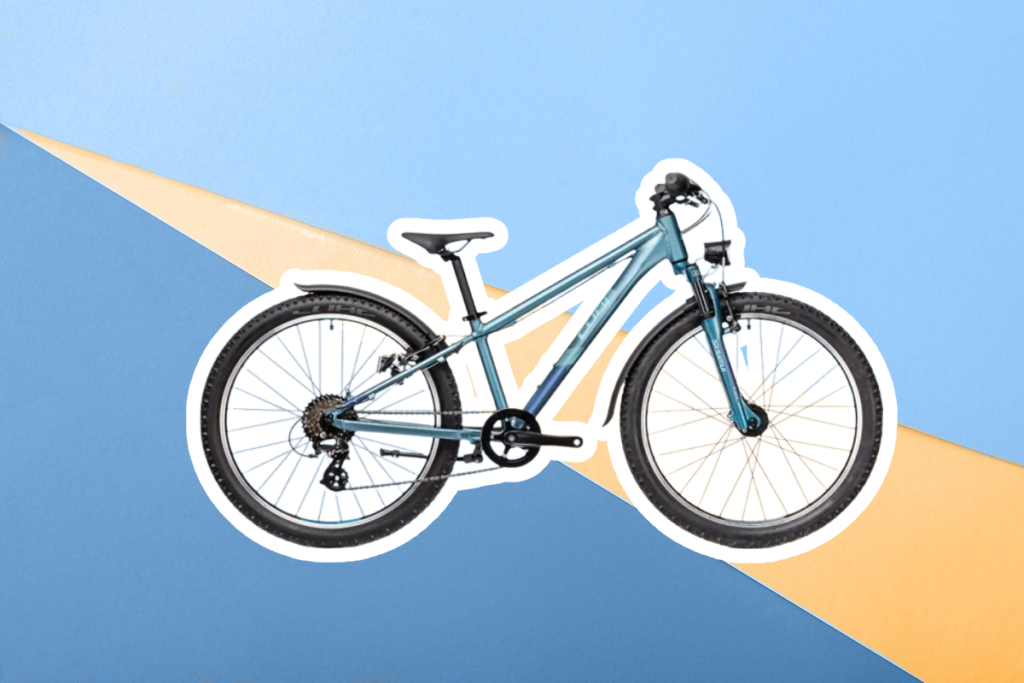- Trails
-
Bikes
-
Gear
-
Tips & Tricks
-
About us


There’s always a risk when engaging in a sport and cycling is no different. Racing along at great speeds means you need to have quick reflexes and knowledge of the terrain to avoid accidental crashes. Then, there’s the wear and tear cycling can take on your body. Whether you are a beginner or have more experience, you may be wondering how can you prevent injury while cycling. We’ll provide some simple tips to help you in your journey. Then, we’ll take a more in-depth look at common injuries cyclists can suffer from and give you some advice on how to work around them. Cycling is a fun sport that can improve your physical and mental well-being. The more you can work to prevent injuries, the more you will enjoy it.
Sustaining an injury is not fun. To keep yourself healthy, here are a few ways you can prevent injuries from happening. Remember that cycling injury prevention may seem like a lot of work but having to heal broken bones takes a lot more effort.
First, how fit is your body? The beauty of cycling is that everyone can participate in this sport, no matter their fitness level. However, if you are not in the best shape, your cycling sessions should be short and on the easier side.
As you become fitter, you can add more distance and decide on more difficult terrains and routes. This way, you can work at your own pace and allow your body to naturally adjust to your new expectations.
It always helps if you have a specific goal in mind with any sort of exercise. Perhaps this is a weight goal or even training for a bike race. The more specific the goal is, the easier it is to create a schedule that will help you achieve it.
Above all else, don’t simply start cycling for hours on end every day. Unless you are an elite athlete, this will weaken your body, not make it stronger.
There are many online riding schedules you can check out for inspiration. You can also ask around in your local community and join cycling clubs. These clubs will have routes put together for people of all abilities.
If you decide to go on a long cycle one day, make sure the next day is a rest day. This will allow your muscles to heal themselves, which will actually make you stronger in the long run.
There are many studies that have shown that strength training is effective at preventing injuries Trusted Source Low-intensity resistance training to improve knee extension strength in community The purpose of this systematic review and meta-analysis was to investigate the effects of low-intensity resistance training on knee extension strength with respect to intensity, frequency, duration and training site in community-dwelling older adults. www.sciencedirect.com , especially in joint areas such as the knees. Alternating cycling days with strength training days can help increase muscle mass, especially in the joints and ligaments that you will use repeatedly while cycling.
Before you hop onto your bike and start cycling, take a few minutes to warm up. This should be a series of dynamic stretches, which are different from the more static stretches many of us are familiar with. Dynamic stretches Trusted Source The Benefits of Dynamic Stretching and How to Get Started Dynamic stretches are active movements where joints and muscles go through a full range of motion. They can be used to help warm up your body before exercising. www.healthline.com are more active and engage multiple areas of your body at the same time.
Easy dynamic stretches include arm circles, hip circles, and walking lunges. Warm up for five minutes before you start cycling and when you return from your cycle, do a series of static stretches that target the areas of your body you used.
Have you been sitting at your desk all day and are now itching for a long cycle home? Before you get on that bike, take some time to move. The transition period between sitting and cycling is critical to help warm up your muscles.
Furthermore, when you are on your bike, don’t just stay in the same position. Sit up straight to lengthen your spine and when it’s safe, twist your body to keep it flexible.
There can be a certain amount of trepidation when starting out in a new sport. Cycling and its iterations have a perception of leading to injury, with many people asking themselves, is mountain biking dangerous? Like all sports, however, the more you know about the risks involved, the more you can prevent them.
Your knees are in constant motion when cycling, which is why they are some of the hardest-hit parts of your body while cycling.
When you have knee pain, you will feel it right away. This pain can include different areas around the kneecap, including under the knee. You may have pain while you are cycling or even afterward if you are walking or even resting.
The best prevention for kneed injuries is strength training. All the muscles that connect to your knees, especially your quadriceps, should be as strong as possible. This way, the muscles do more of the work rather than the ligaments that connect to your kneecap.
A simple quad stretch, where you stand and bend your leg back should be done throughout the day. Be sure to stretch well after you cycle and if you have some free time during the day, keep stretching the muscle out.
Using a foam roller to stretch the muscle out will also help. Lay on the roller and move your leg around. This will increase blood flow to the area which will help heal any torn muscles faster.
As you cycle, your body will naturally hunch over. This is more pronounced in road cycling but even with the best mountain bikes, your lower back can take a lot of strain.
Unfortunately, lower back pain is prevalent in cycling and incredibly uncomfortable. You might be fine while on your bike, but as soon as you go to move your body, you can experience a stabbing pain in your low back or even a burning sensation. Many people will have stiffness and an overall ache in the area.
Stability and strength are key to preventing lower back pain. There are many muscles that work together in the back, so strengthening them can help them work together instead of your lower muscles doing all the work. Having a strong core is also important as your front muscles can take on more effort.
Work on all sides of your trunk. A simple cat/cow yoga pose involves you engaging your core and then releasing it through stretching your back. Go through a few cycles of this before and after you are on your bike.
Working on other parts of your body, especially your glutes, can also keep pressure off your lower back. Fire hydrant stretches, where you get into a tabletop position and move one leg off to the side while bending the knee, can strengthen this part of your body. Deadlifts when done correctly will also strengthen your glutes.
An incredibly uncomfortable cycling injury is neck pain. Unlike other body parts, which can be rested, we use our neck throughout the day.
You may have pain in different areas of your neck, including the base and the sides. You may be comfortable looking straight ahead but if you turn your neck, you can experience a sharp stabbing pain.
Most neck injuries are a result of bad posture while cycling. Try to keep your head in a neutral position while riding. Move your eyes to see where you are going, not your whole head as this can put it in a hard position to sustain.
The stronger your shoulders are, the more you can use them, which will lessen the strain on your neck. Rows are easy to do with free weights. Bend over slightly at the waist and move a dumbbell up, past your back. You want to feel the movement in your upper back and not your neck.
Reverse flies are also a good way to strengthen your shoulders. These are harder to do, however, so use a lighter weight. Move your arms from your chest and then extend them straight so they are slightly higher than your back as you bend over.
While not as common as other injuries, you may feel strain in your hip area.
Hip pain can feel like a dull ache when you walk. The joints may be fine while sitting down but when moving, you can feel more irritation.
Keeping the area around your hips agile and strong is key for prevention. Strengthen your glutes and work on balance so all the small parts around your hip flexors are nimble.
A kneeling lunge will help work your hip flexors. Start with one knee on the ground and the other leg at a 90-degree angle in front of it. Move your hips forward until you feel the stretch. You can tighten your glutes to experiment with a deeper stretch.
In addition to hips and knees, your ankles are another area of joint pain. Cycling ankle injuries are not fun, as they can impact the rest of your daily life.
Pain in your ankle and Achilles tendon can result in pain and stiffness. This can be felt from the heel of your foot up to your calf.
First, what kind of pedals are you using on your bike? If your foot motion doesn’t feel natural, you should look at some of the best flat pedals for road bikes. Then, pedal naturally so that the movement is extended throughout your foot and not just focused on your ankle.
Calf raises are an easy way to strengthen the area around your Achilles heel. You can do them anytime, even while brushing your teeth. Simply raise one foot off the ground but press your toes into the floor. Repeat 15 times on each foot.
Even if you have the best of intentions while cycling, there are still a few common mistakes that everyone can be guilty of.
When cycling, it’s best to think of your bike as an extension of yourself. If you’re sick, you rest or head to a doctor. If your bike isn’t performing how it usually is, give it a break and check it out. Small details, such as a loose nut, can cause major problems if they aren’t fixed right away.
Taking your bike in for routine maintenance is also critical. If you ride every day, monthly checks are a good idea. For those cyclists who are more seasonal, be sure to have your bike checked out at the beginning of a new riding season to ensure nothing is broken or damaged from storage.
Perhaps there’s a certain look you’re going for when you’re cycling. And maybe, that’s a free-wheeling, laidback attitude. Unfortunately, cycling on the road Trusted Source Bicycle Safety Transportation Safety Injury Center CDC Bicycle trips make up only 1% of all trips in the United States. However, bicyclists account for over 2% of people who die in a crash involving a motor vehicle on our nation’s roads. www.cdc.gov is full of dangers. In fact, a few cycling injury statistics from the CDC include over 1,000 deaths and 130,000 injuries due to cyclists having to share the road with vehicles.
The good news is that perceptions are changing around sports. Instead of trying to be as macho as possible, basic safety is commonplace and not frowned upon. You won’t be judged if you wear a helmet.
While there are plenty of colorful options when it comes to bike helmets, you can also stick to basics, such as with this Schwinn Thrasher helmet. Its all-black design has a sleek design to it and as a bonus, it comes with an adjustable visor.
You can go one step further and install a light or at the very least, a reflector, on your bike. This is of the utmost importance if you intend to ride at night. This Ascher bike light has a rechargeable LED lightbulb which will save you the hassle of having to buy new batteries. The light is bright enough to allow you to bike all year round, even when the sun sets early in the winter.
Every injury is different, so it’s hard to say how long bike injuries will take to heal. Something severe like a broken bone can take at least three months while most sprains will heal after two weeks. It’s important not to push your recovery process. Give your body the rest it needs and once you get the all-clear from your doctor, start out slow to regain your strength.
Yes, unfortunately, cycling can damage nerves depending on the type and severity of your injury Damage to your nerves Trusted Source Nerve Pain and Nerve Damage Symptoms and Causes Your nervous system is involved in everything your body does, from regulating your breathing to controlling your muscles and sensing heat and cold. Because nerves are essential to all you do, nerve pain and damage can seriously affect your quality of life. www.webmd.com can result in various symptoms, such as numbness, burning, and muscle atrophy.
If you have been diagnosed with nerve damage, follow your doctor’s advice. A combination of rest and rehabilitation is usually prescribed.
Cycling is certainly a fun sport. The thrill of bike riding that you experienced as a kid can be harnessed, even as an adult. Your bike has a lot of moving parts and so does your body, which is why cycling injuries are common. However, there are easy ways to prevent these injuries so you can spend as much time on your bike as possible. Start by investing in the right kind of bike and ensure you have a quality helmet and a light or reflector for night riding. Watch out for other cars on the road and if possible, stick to bike lanes. Before you jump on your bike, do some dynamic stretching to warm up, and don’t forget to stretch afterward. Finally, while on your bike, move your body in a natural position so your muscles don’t freeze up. We hope you now have a better understanding of how can you prevent injury while cycling. A little bit of extra work will allow you to enjoy your bike whenever you want!





